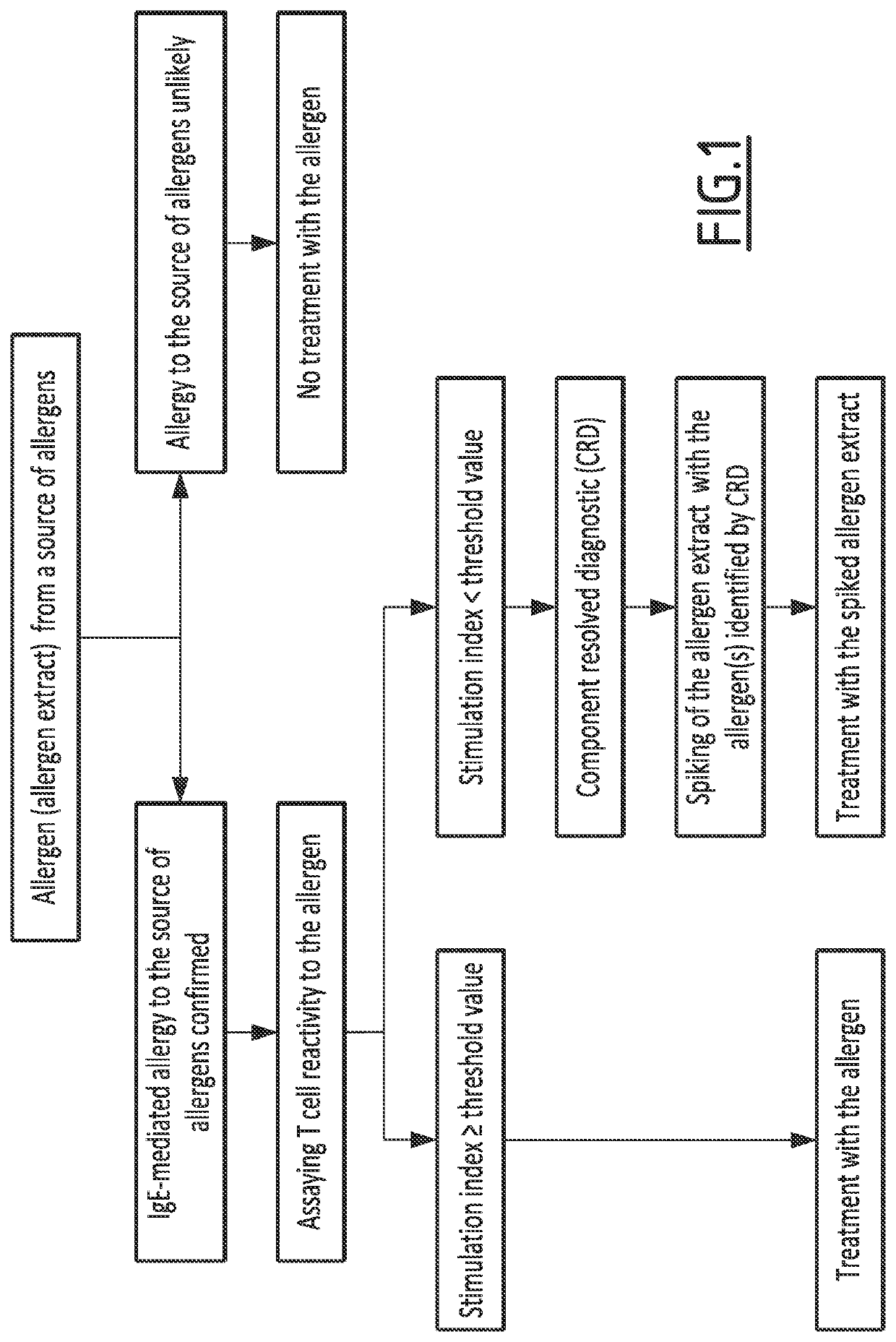Method for classifying an allergic patient as eligible to allergen immunotherapy
a technology for immunotherapy and allergic patients, applied in the field of immunotherapy for allergic patients, can solve the problems of uneven immunotherapy effect, and no solution has been proposed so far to address this issu
- Summary
- Abstract
- Description
- Claims
- Application Information
AI Technical Summary
Benefits of technology
Problems solved by technology
Method used
Image
Examples
example 1
[0092]T cell proliferation assays is performed as described in Tscheppe et al. J Allergy Clin Immunol 2020;145:229-38.
[0093]PBMCs are isolated from the blood of allergic patients and cultivated with 1 to 10 μg / mL of the allergen. Proliferation is measured through incorporation of tritiated thymidine within 16 hours. Results are expressed as stimulation indices (Sls), which is calculated as the ratio of the amounts of radioactivity in allergen-stimulated PBMCs and unstimulated cells.
[0094]For confirming allergen-specific proliferation of T CD4+ cells, carboxyfluorescein N-succinimidyl ester (CFSE) staining is performed, and expression of cell-surface markers is measured by using flow cytometry. In details, freshly isolated PBMCs of patient are cultivated in the presence of CFSE with 6 μg / mL of the allergen. As positive and negative controls 2U of IL-2 and medium are used. On day eight, PBMCs are restimulated with phorbol 12-myristate 13-acetate and ionomycin...
example 2
ELISPOT for Assaying IL-4 and / or IL-13 Secretion
[0095]The production of IL-4 and / or IL-13 by PBMCs post-stimulation with the allergen in analyzed in dual ELISPOT assays. Flat-bottom 96-well nitrocellulose plates are coated with either 10 μg / ml of both anti-human IL-4 and anti-human IL-13. PBMC are then incubated at a density of 1×105 / well either with 1 to 10 μg / ml of the allergen (either allergenic peptide pools or allergen extract), or control medium. After 24 h, cells are removed, and plates are incubated with a cocktail containing biotinylated anti-human IL-4 and horseradish peroxidase (HRP)-conjugated anti-human IL-13 at 37° C. After 2 h, spots corresponding to the biotinylated IL-4 Ab are developed by incubation with Alkaline-phosphatase-Complex (Vector Laboratories, Burlingame, Calif.) and then visualized by applying the Vector Blue Alkaline Phosphatase Substrate Kit III (Vector Laboratories, Burlingame, CA) according to the manufacturer's instructions. Spots corresponding to ...
PUM
| Property | Measurement | Unit |
|---|---|---|
| density | aaaaa | aaaaa |
| T cell reactivity | aaaaa | aaaaa |
| reactivity | aaaaa | aaaaa |
Abstract
Description
Claims
Application Information
 Login to View More
Login to View More - R&D
- Intellectual Property
- Life Sciences
- Materials
- Tech Scout
- Unparalleled Data Quality
- Higher Quality Content
- 60% Fewer Hallucinations
Browse by: Latest US Patents, China's latest patents, Technical Efficacy Thesaurus, Application Domain, Technology Topic, Popular Technical Reports.
© 2025 PatSnap. All rights reserved.Legal|Privacy policy|Modern Slavery Act Transparency Statement|Sitemap|About US| Contact US: help@patsnap.com

